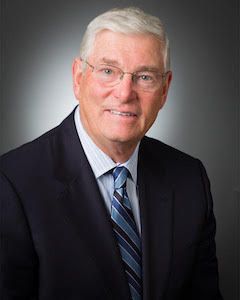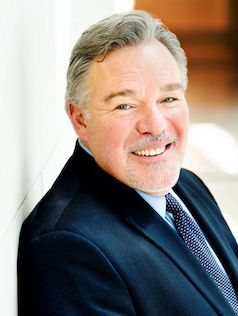From Fortune 500 to Startup
Michael Wong speaks to Wayne Yetter (founding CEO of AstraMerck) and Renold (Ren) Capocasale, CEO of FlowMetric Life Sciences, about making the transition from a Fortune 500 firm to a startup.
Michael Wong speaks to retired pharma exec Wayne Yetter (founding CEO of AstraMerck and former CEO of Novartis US) and Renold (Ren) Capocasale, CEO of FlowMetric Life Sciences, about making the transition from a Fortune 500 firm to a startup.
Michael Wong: As CEO of the start-up, AstraMerck Group, which eventually evolved into today’s AstraZeneca, what was the secret sauce to not only build a sustainable organization (on which a Harvard Business School case study was written),[1] but also to create career opportunities for your direct reports and other employees?[2]
Wayne Yetter

Wayne Yetter: Back in 1992 after some initial planning for the AstraMerck start-up, there were approximately twenty-five employees who accepted the challenge to build a new pharmaceutical company. I believe it was our team’s clear shared vision and corporate culture that provided the foundation for our success. The entire initial team defined a vision to revolutionize the pharmaceutical industry by being the best at linking patients and products and mapped the journey to create the company starting with a “blank sheet of paper.” Our shared culture and trust-based values were also key to our success.
As the majority of our early-joiners were fellow Merck alumni who shared a common background, it was both exciting and challenging for our team to not rely upon their proven playbooks or mental models that had earned Merck the Fortune’s Most Admired Company ranking, not just for pharma but for all industries, for a record seven years in a row. Our “Vision 2000”, which at the time was eight years away, stated Our Mission, Our Strategic Intent, Our Value Propositions (for key stakeholders), Our Target Outcomes, and Our Values all on one page of paper. It served as the strong magnetic force that guided the entire organization to our future success.
I am pleased how this start-up venture eventually grew into today’s AstraZeneca and to see so many AstraMerck alumni bring their leadership talents by building value at other Fortune 500 firms as well as at other successful startups. Creating a start-up like AstraMerck was an extraordinary experience but it benefited from the support of Merck resources. I admire true entrepreneurs who take the journey to start-ups, seeking venture funding and building a company with their expertise and passion.
One such place entrepreneurs can start their journey is the Pennsylvania Biotechnology Center. During the last several years, I have served on the board of the Hepatitis B Foundation and Chair the Board of its research arm, the Baruch S. Blumberg Institute. The Foundation has also built the Pennsylvania Biotechnology Center in Doylestown, PA that serves as home to almost forty start-up companies, most being created by scientists and executives who have taken the journey from large pharmaceutical companies to start-ups. Ren Capocasale, CEO of Flowmetric, is an example of how this journey can turn into great success.
MW: Since not all start-ups will have the benefit that AstraMerck had in terms of a sponsor like Merck which provided people and other key resources, what are the top three recommendations that you have for making the transition from a Fortune 500 firm to a startup?
Ren Capocasale

Renold Capocasale: Firstly, never underestimate the importance of your sweat equity to create a value proposition that will resonate with prospective investors and clients. For some would-be entrepreneurs, they approach fellow co-workers from past employers to secure initial sales orders. At first glance, this path seems logical, tapping into friends and colleagues to secure sales wins. However, while I established many great friendships during my tenure at J&J, I purposely prospected at every large pharmaceutical company, except J&J. My thought process was that I had to create a real value offering in the marketplace, not just with good friends who were trying to help me out. Believe me, during those first three years of my startup, it was painful to knock on doors and get rejected. At heart, I was still a bench scientist, not a sales rep, and so I had to reinvent myself and modify my thinking. And now a decade later, from a team of “me, myself, and I” to more than thirty-five employees, our start-up has grown into a trusted GLP CLIA certified Contract Research Organization partner, with locations in the US and Italy; and we continue to grow with every opportunity.
Secondly, secure a platform to amplify your limited resources towards supporting your business as it grows. The Pennsylvania Biotechnology Center[3] provided my company with such a solid foundation. It is among the nation’s most successful incubators, and just last year, over $500m was raised for member organizations’ R&D efforts. They provide a nurturing environment for entrepreneurs to learn and to organically grow their companies. We have benefitted in terms of networking opportunities, access to legal and logistical services, and most importantly, in interacting and collaborating with the other tenants.
Finally, lean into a future of entrepreneurial uncertainty by considering the needs of all team members. With the COVID-19 pandemic, these past few months have been brutal for everyone, and job security has been top of mind for all of us. While words are easy to post on LinkedIn and other platforms, actions are what existing and future employees and customers are looking for. We have a dedicated team, who connect on a daily basis to focus on each other and our clients. And as a company, we focus on our growth into the future, and more importantly, the real difference we can make to our clients.
Wayne Yetter is a retired pharmaceutical executive and board member, founding CEO of AstraMerck and former CEO of Novartis Pharmaceuticals US.
Renold (Ren) Capocasale is Chairman of the Board and Chief Executive Officer of FlowMetric Life Sciences as well as a Board member of Atrin Pharmaceuticals and Neumann University.
Michael Wong is an Emeritus Board Member of the Harvard Business School Healthcare Alumni Association.
[1] Cespedes, Frank V, AstraMerck Group case study, Harvard Business School, March 1994 https://www.hbs.edu/faculty/Pages/item.aspx?num=19778
[2] Kenneth C. Frazier is CEO of Merck, Matthew Emmens was CEO of AstraMerck, Shire and Vertex, and David R. Brennan was CEO of AstraZeneca.
Beyond the Prescription: Pharma's Role in Digital Health Conversations
April 1st 2025Join us for an insightful conversation with Jennifer Harakal, Head of Regulatory Affairs at Canopy Life Sciences, as we unpack the evolving intersection of social media and healthcare decisions. Discover how pharmaceutical companies can navigate regulatory challenges while meaningfully engaging with consumers in digital spaces. Jennifer shares expert strategies for responsible marketing, working with influencers, and creating educational content that bridges the gap between patients and healthcare providers. A must-listen for pharma marketers looking to build trust and compliance in today's social media landscape.
Beyond the Prescription: The Role Pharma Plays in Digital Health Conversations
April 1st 2025As social media continues to influence healthcare communication, it presents both challenges and opportunities for the pharmaceutical industry. In this interview, Jennifer Harakal of Canopy Life Sciences discusses balancing compliance with effective digital engagement to build trust and facilitate meaningful healthcare conversations.